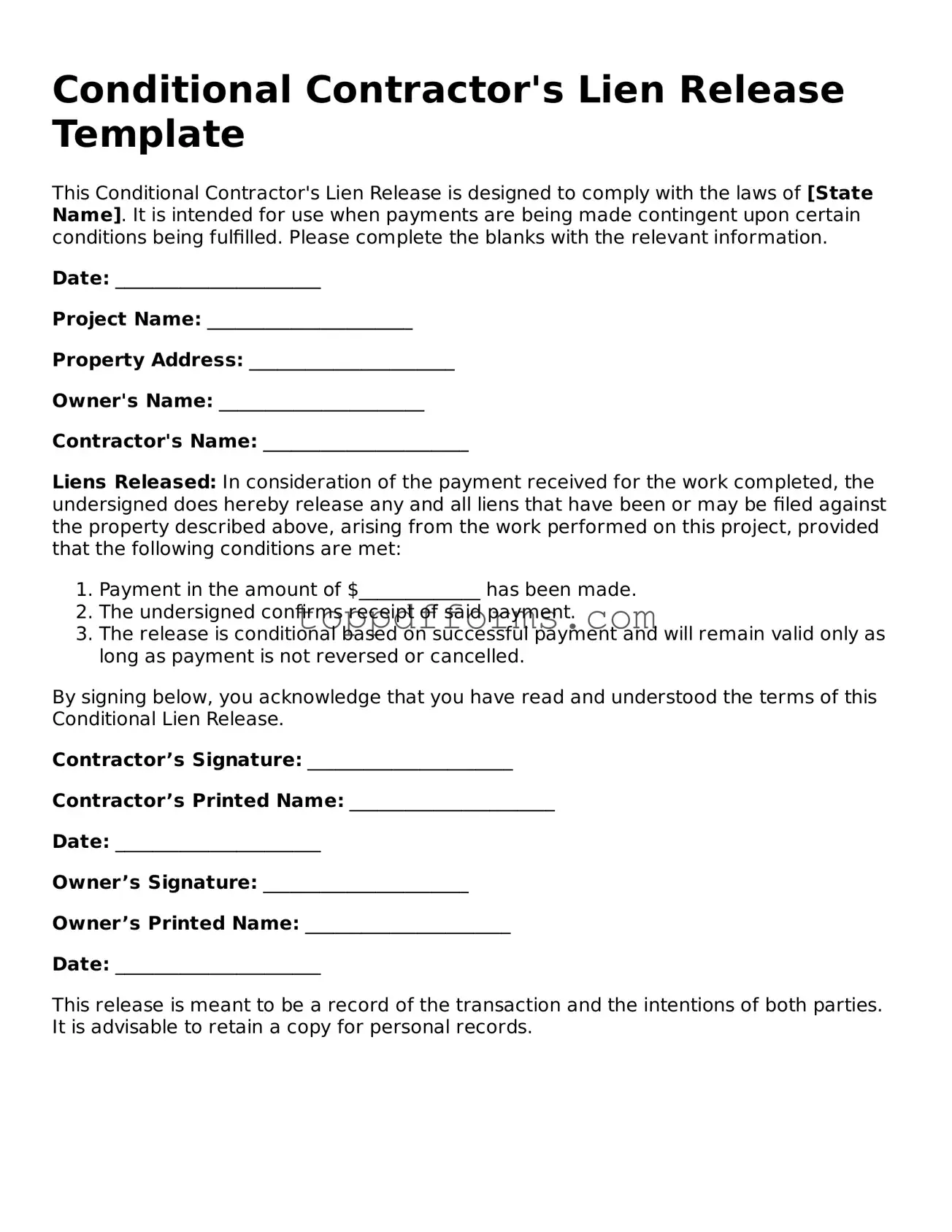What is a Conditional Contractor’s Lien Release form?
The Conditional Contractor’s Lien Release form is a document used by contractors to relinquish their right to place a lien on a property, contingent upon receiving payment. This form serves as a protective measure for both the contractor and the property owner, ensuring that the contractor will not pursue a lien if they are compensated as agreed.
When should I use a Conditional Contractor’s Lien Release form?
This form should be used when a contractor has completed work on a property and is expecting payment. It is particularly important in situations where the contractor wants to assure the property owner that they will not file a lien, provided that the payment is made. It is advisable to use this form before the payment is processed to clarify the terms.
What information is required on the form?
The form typically requires the contractor’s name, the property owner’s name, a description of the work completed, the amount owed, and a statement indicating that the release is conditional upon payment. Including specific details helps to avoid any misunderstandings later on.
Is the Conditional Contractor’s Lien Release form legally binding?
Yes, once signed by both parties, the form is legally binding. It creates an agreement that protects the contractor’s right to payment while assuring the property owner that no lien will be filed as long as the payment is made. It is important for both parties to understand the terms before signing.
What happens if payment is not made after signing the form?
If payment is not made after the Conditional Contractor’s Lien Release has been signed, the contractor retains the right to file a lien on the property. The conditional nature of the release means that it only applies if the payment is received as agreed.
Can I modify the Conditional Contractor’s Lien Release form?
Modifications can be made to the form, but it is essential to ensure that all parties agree to the changes. Any alterations should be clearly documented and initialed by both the contractor and the property owner to avoid disputes in the future.
Do I need a witness or notary for the form?
While a witness or notary is not always required for the Conditional Contractor’s Lien Release form, having one can add an extra layer of protection. A notary can verify the identities of the signers, which may help prevent future disputes regarding the authenticity of the signatures.
Where can I obtain a Conditional Contractor’s Lien Release form?
Conditional Contractor’s Lien Release forms can be obtained from various sources, including legal supply stores, online legal document services, or through a legal professional. It is important to ensure that the form complies with state laws, as requirements can vary by jurisdiction.
